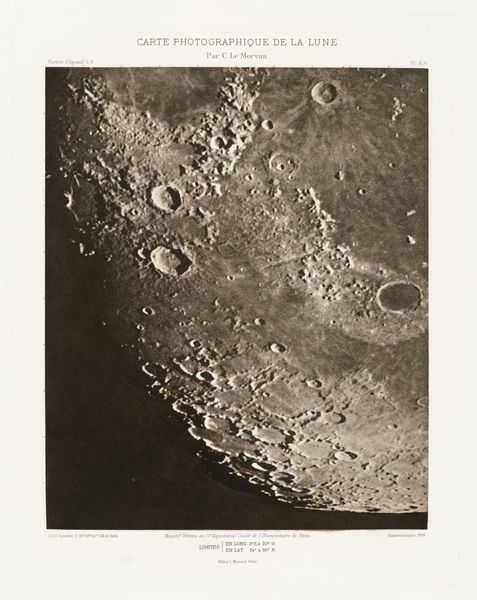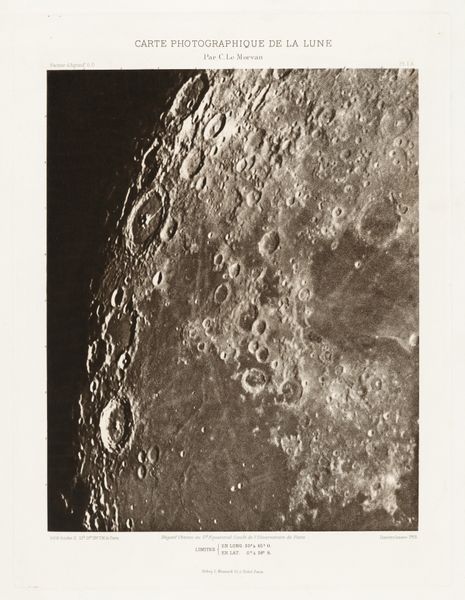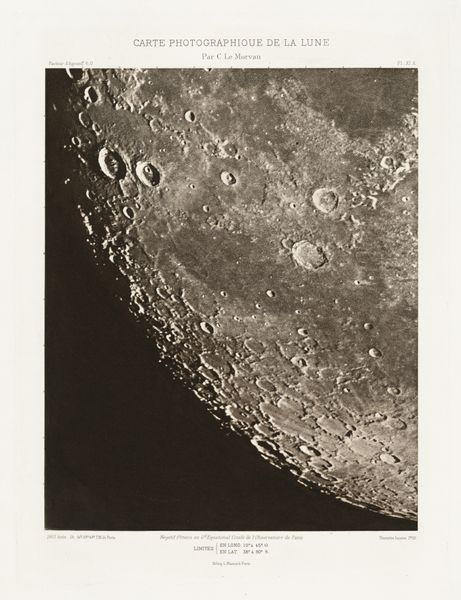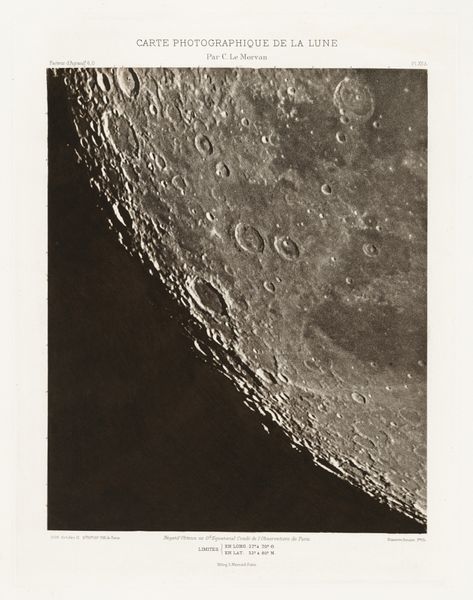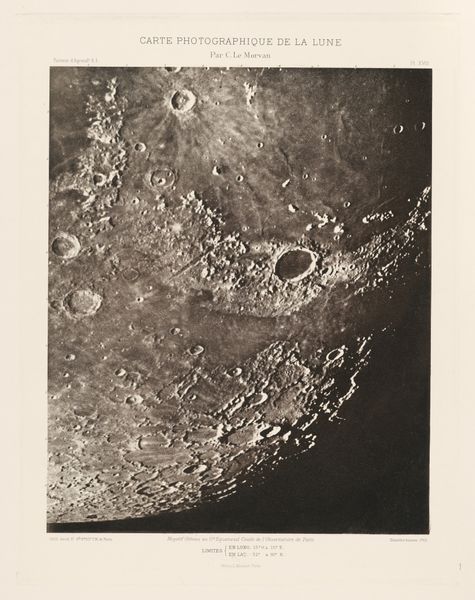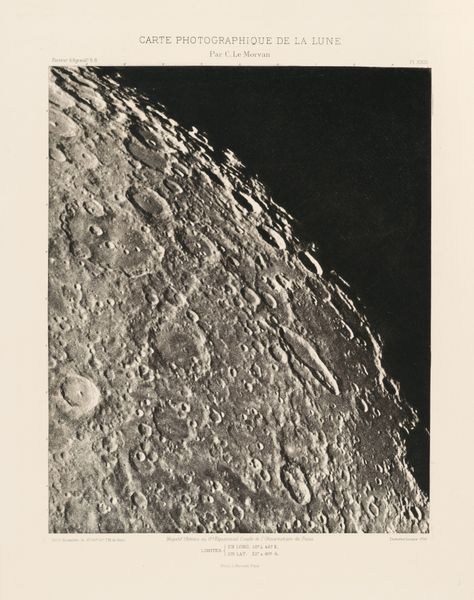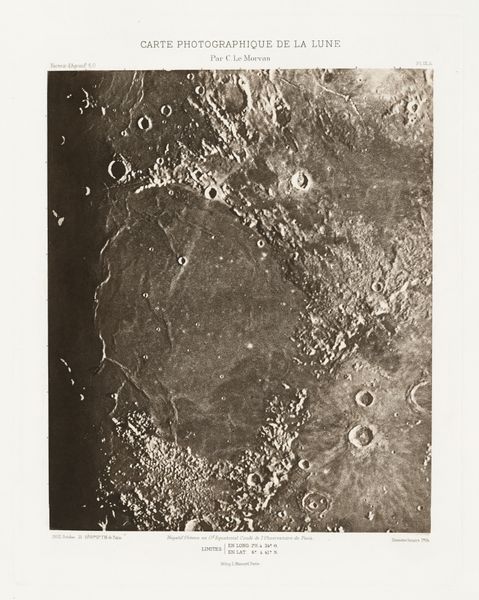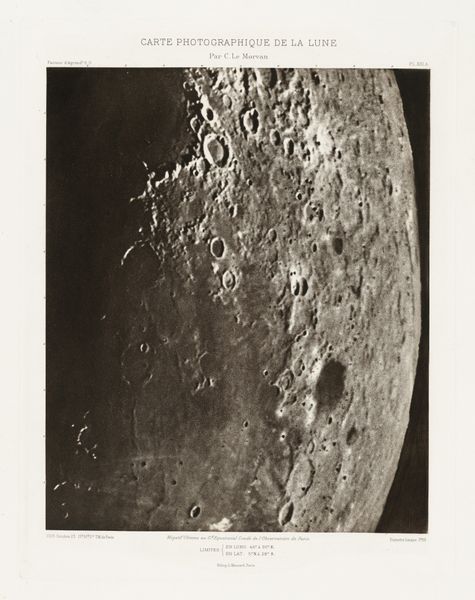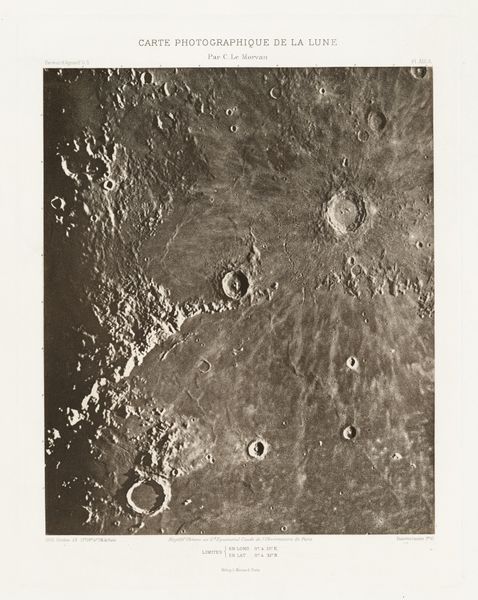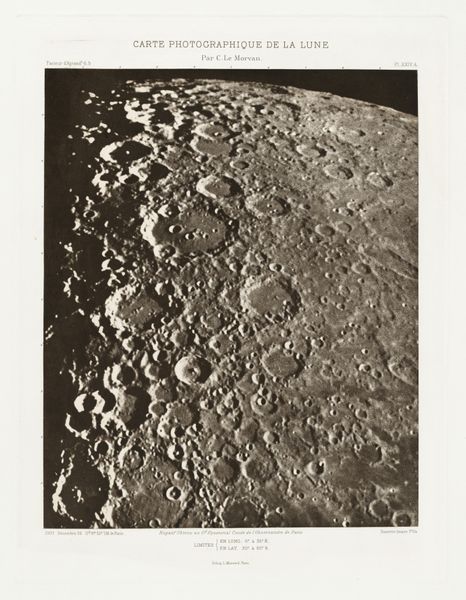
Carte photographique de la lune, planche VII.A (Photographic Chart of the Moon, plate VII.A) Possibly 1908 - 1914
0:00
0:00
photogram, print, photography
#
photogram
# print
#
landscape
#
photography
#
geometric
#
monochrome
Dimensions: image: 31.1 × 25.5 cm (12 1/4 × 10 1/16 in.) plate: 38.9 × 29.5 cm (15 5/16 × 11 5/8 in.) sheet: 49 × 37.9 cm (19 5/16 × 14 15/16 in.)
Copyright: National Gallery of Art: CC0 1.0
Curator: This print, "Carte photographique de la lune, planche VII.A," or "Photographic Chart of the Moon, plate VII.A," is attributed to Charles Le Morvan and likely dates to the period between 1908 and 1914. It’s a photogram, a photographic print capturing the surface of the moon in monochrome. Editor: Well, my first impression is how much it resembles an ancient etching! There’s something so textural and tangible about it, like holding a piece of cosmic history. It makes me want to reach out and touch it. What's the meaning that resonates with you? Curator: The geometric, almost topographic, feel to it taps into our enduring fascination with celestial bodies. It feels as much like a scientific document as it does a work of art. The visual impact is compelling because it shows an alien, familiar landscape simultaneously, the moon’s face, a face scarred by countless encounters. The craters represent resilience but also the relentlessness of time and space. Editor: Absolutely. The craters are like these silent witnesses, each one marking a collision, a moment of impact. And the fact that it’s rendered in monochrome only heightens the sense of drama and timelessness. Don't you get the impression that one is facing geological inevitability, the sheer indifferent, but magnificent physics? Curator: Exactly! And Le Morvan captured more than just the geography; he has imprinted a certain aura, too, with his particular manipulation of light and shadow. I detect something mythical within the objective surface details, which reminds us that our interpretation of space is filled with cultural values. It echoes our dreams, ambitions, fears… Editor: Dreams cast onto a dusty mirror hanging up there. Speaking of cultural memories: don’t you think the flat, printed medium gives this vast celestial body a relatable shape that renders the mysteries of space and our understanding much closer? It certainly invites closer looking, and imaginative wanderings. Curator: Agreed. Perhaps that’s why, even a century later, this lunar map feels so vital, not just a relic from the past but also a window to how we understand the cosmos. Editor: So true, so true. Le Morvan truly etched something hauntingly memorable into my imagination today.
Comments
No comments
Be the first to comment and join the conversation on the ultimate creative platform.

